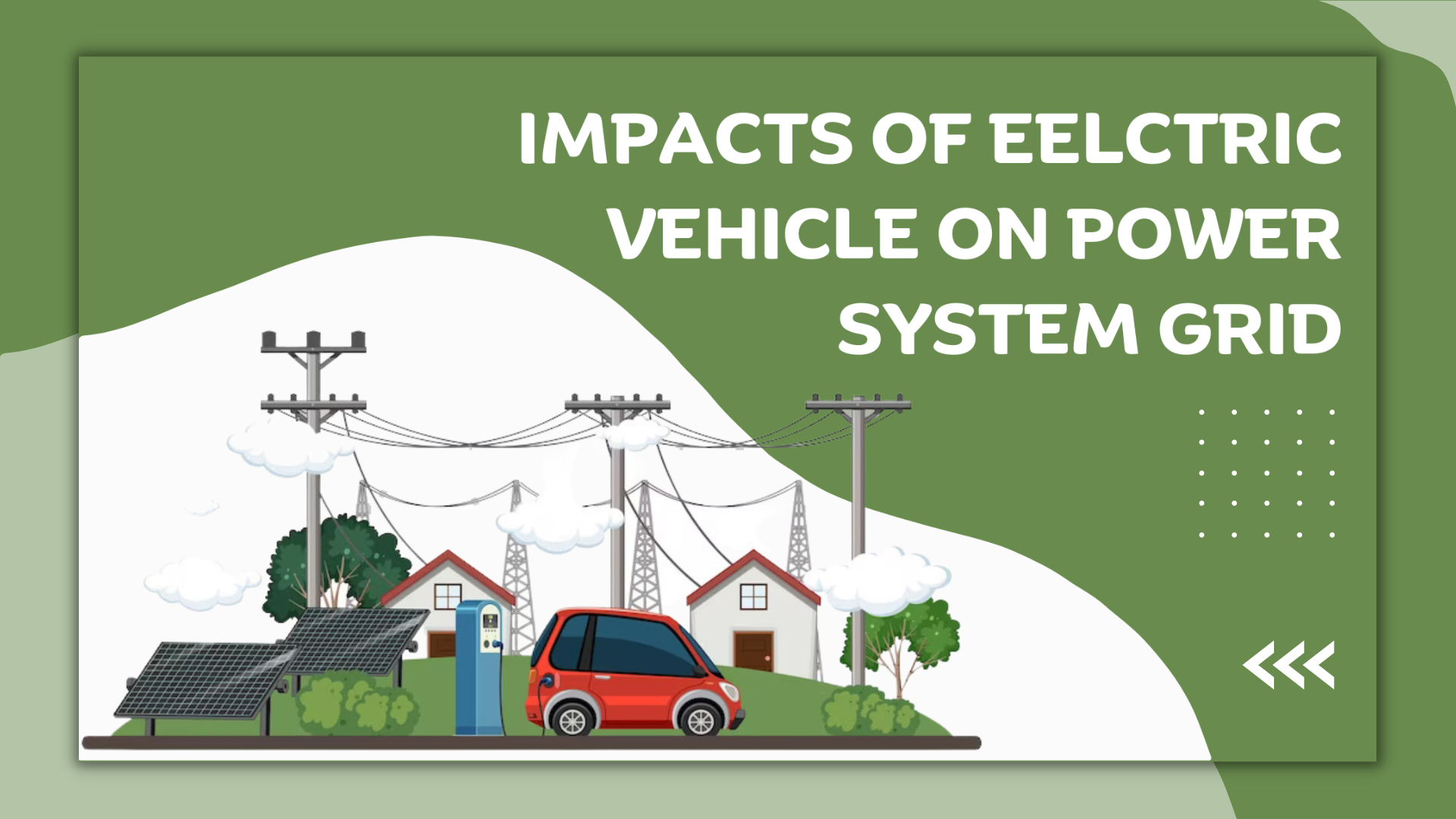Table of Contents
Impacts of Electric Vehicles on the Power System
Electric vehicles (EVs) are now acceptable to its customer as their sales have grown by 148% compared to last year. In March, a total of 140,509 units of EVs including 2W and 3W are sold. The Indian government’s ambition is to have EV sales accounting for 30% of private cars, 70% of commercial vehicles, and 80% of 2W and 3W by 2030. Electric vehicles need a large amount of electricity to charge their discharged battery.
In India, on average, a household needs 5.7 kWh per day of electricity. So a car (Tata Nexon has 40.5 kWh) with having 40 kWh capacity battery consumes energy equal to 6-7 households alone. In a study, it is found that China’s existing power grid can withhold less than 20% of petrol-diesel engine vehicles if they get converted into electric vehicles. Charging EVs at peak time (when the load on the power grid is more, for example in the evening 6 pm to 9 pm) can burden the grid more. Electric vehicles are considered highly dynamic loads as they are mobile in nature and power consumption depends upon the vehicle traveled in a day.
EV charging has the following negative impacts on power grids
Voltage Instability and Phase Unbalance
EVs consume more power in a short time to fully charge the battery. Single-phase EVs chargers increase phase unbalance at the distribution network which increases unwanted negative effects on distribution network operation and connected loads. According to the study, it is found that rural power distribution faces higher voltage drops and needs voltage regulation devices.
Overloading of Distribution Network Components
Electricity needs three stages to reach its customers Generation, Transmission, and Distribution (it is the consumer side of power lines). The high EV energy demand requires a large amount of electric energy to be transmitted from the generation stations to the distribution networks. The distribution networks’ equipment such as transformers and cables may get overloaded due to the new EVs load. These components are also affected by the type of charging- fast or slow. In a study, it is found that cable can handle up to 25% of EV penetration for slow charging and 15% for fast charging.
Harmonics Distortion
Electricity comes in AC form at 50Hz frequency but EV integration causes harmonics distortion (generation of a frequency other than 50Hz of the fundamental frequency) which causes power loss. So the transformer and cable get heated and this causes a decrease in components life.
Ways to Minimize EV Impact on Power Grid
By using proper charging algorithms
The choice of charging greatly affects the impacts caused by EV penetration to the grid. Smart Charging and Delayed Charging algorithms can be used.
Smart Charging communicates between the power distributor and Charging stations or points and charges the EVs when the load on the grid is less. It also discharges the battery (EV) to send the power back to the power grid when the demand on the grid is at its peak. This concept is known as Vehicle to Grid (V2G). It charges the EV when the load on the grid is less so fewer tariffs are applied and ultimately helps EV users to reduce charging costs.
So, this way, Smart charging flattens the load curve and increases the life of power distribution components like transformers, and cables.
However, it is complex and requires more communication protocols so it is costly to implement.
Delayed Charging controls the charging time and charges EV only when off-peak time. So, this way it reduces the cost of charging and tries to make the power grid operate smoothly.
Integration of Renewable Energy Sources

Renewable energy sources like Solar, Wind energy when locally integrated into charging stations (works as micro-grid) make the charging station power reliable and reduce the burden of the power grid hence negative impacts are reduced.
Read More: Ather Grid and Ather Dot: Everything You Need to Know









